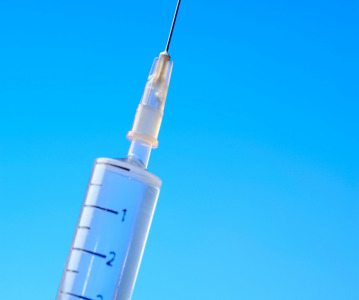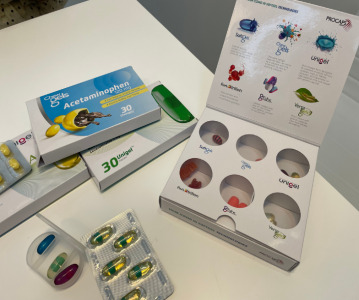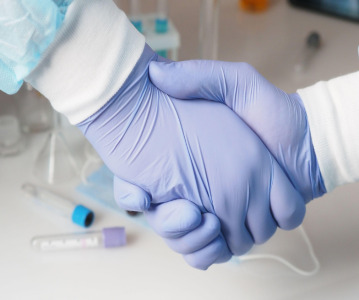CPHI Worldwide experts predict CDMO mega-mergers and Chinese patented products imminent

HPAPI growth driven by virtual and mid-sized pharma, with biosimilars expanding rapidly in Europe.
:CPHI Worldwide, (#cphiww), organised by UBM EMEA, has released the findings of Part II of the 2016 CPHI Annual Report, which focuses on the immediate and short-term trends in pharmaceutical outsourcing. Four experts – Gil Roth, Vivek Sharma, Dr Minzhang Chen and Ravi Limaye – examine the implications on growth prospects and drag factors across the EU, China, India and the US.
The overall findings reveal that recent outsourcing trends are now accelerating, with acquisitions of not only larger contract manufacturers adding specialist technologies from smaller niche companies, but increasingly, we will see larger API-led firms trying to merge or partner with finished product specialists of similar size. In terms of product classes, ADCs, HPAPIs and biosimilars are anticipated to see rapid growth in Western markets. In China and India, biosimilars are also predicted to grow steadily, with harmonisation to FDA standards also anticipated. Perhaps most strikingly, it is also forecast Chinese biotech companies will increasingly try to partner with CDMOs based in Western markets to bring future products to market.
Gil Roth, President of the Pharma and Biopharma Outsourcing Association argues this is a key time for the industry as many of the largest players are looking holistically at how they can bring in new services and meet future drug development challenges – with even mega-mergers likely to be attempted. Beyond acquisitions, the other major progression is in the nature of relationships with pharma, as increasingly CDMOs are viewed as strategic partners not services provides. As such, he predicts that in the near future we will see more risk-sharing approaches to development work, with contract providers taking more risks, but also, getting greater potential profits as a result. He added, ‘what we will also see is that the industry is extremely well placed to help commercialise orphan products, tropical diseases and complex generic thanks to the new wave of manufacturing technologies being implemented.’
One other major growth area particularly in Western markets is HPAPI’s, Vivek Sharma, CEO at Piramal Enterprises Ltd envisages the industry will grow rapidly thanks to the pipeline of targets emerging from mid-sized pharma and biotechs, with no captive in-house resources. Echoing Roth’s perspective, Vivek predicts increasingly we will see ‘some CDMOs consider using investment arms to take equity stakes in targets they manufacturer’. For late-stage products, CDMOs will consider risk sharing in exchange for a larger cut of commercial volumes, and in early development, some will accept lower compensation upfront, in lieu of future payments tied to a fund raising event. Overall, he states that the majority of growth in HPAPIs work will be undertaken by large CDMOs, with a proximity to Europe and the USA – with 80% of products for oncology, and bio APIs now increasingly from there 15% market share.
Dr Minzhang Chen, CEO of STA Pharmaceutical, a WuXi AppTec company, outlines a very positive future for both CMOs and Chinese research companies, stating that in the next 2-5 years we will see patented drugs emerging from China for global patients, with a number of Chinese biotechs running late stage research programmes. There is also going to be increased convergence between China FDA and FDA/EU standards over the next 5 years, with the pilot plan for Marketing Authorization Holder (MAH) opening up further opportunities.
As a result, Chinese CDMOs with facilities in both the US and China will play a key role in bridging the two largest global markets, thus enabling companies outside China to bring their products to China, or perhaps more significantly, Chinese biomedical research companies to bring their products to the US.
The report also forecasts biosimilars are going to have a much larger global significance in both Western and emerging markets. Ravi Limaye, President, Marketing at Biocon antipicates rapid growth in this market, with 12 biologic exclusive licenses expiring by 2020, leading to global sales of $25-35 billion. Moreover, he states that Europe remains the main market for biosimilars in development (29), but increasingly we will see the rise of biosimilars in the US (19 products) and Japan with seven products under development. However, he tempered his growth predications by cautioning that much work is still needed to standardise interchangeability and naming conventions if biosimilars are to have the same impact that small molecule generics have had in the last 25 years.
Chris Kilbee, Group Director Pharma at CPHI Worldwide, said: “The outsourcing sector continues to grow apace globally, as evidence by our own developments and growth at ICSE. What is most significant is that they are now an integral component of the drug development and manufacturing process. Not simple service providers, but the strategic partners pharma needs to bring its products to market. We will see further outsourcing growth, specifically for newer niche technologies, and this is where CPHI will continue to play an essential role in facilitating these meetings and bringing pharmz closer together.”
Related News
-
News CPHI Frankfurt: Interview with Marcelo Cruz, Vice President, Business Development & Marketing at Tjoapack
In this series of interviews, we caught up with some of the exhibitors at CPHI Frankfurt to discover what innovations are being brought to the pharmaceutical industry this year. Here we chat with Marcelo Cruz of Tjoapack to discuss how global events ar... -
News CPHI Frankfurt 2022: Innovator Interviews – Bioiberica
In this series of interviews, we speak to the companies on the CPHI Frankfurt show floor who are driving innovation in pharma for a better healthcare future. We caught up with Mónica Gómez Navarro (Marketing Manager Branded Ingredients), ... -
News CPHI Frankfurt 2022: Innovator Interview – Procaps Group
In this series of interviews, we speak to the companies on the CPHI Frankfurt show floor who are driving innovation in pharma for a better healthcare future. We interviewed Rosella Del Vecchio Herrera, Marketing Director at Procaps Group, to discover h... -
News From the floor - CPHI Frankfurt 2022
The live blog from the people on the ground at CPHI Frankfurt - covering all stand-out news, memorable moments, and keynote updates from the 2022 event. -
News How to Commercialise an Advanced Therapy: Connect to Frankfurt on-demand
In this Connect to Frankfurt session, Andrea Zobel, Senior Director, Personalized Supply Chain at World Courier (Berlin Germany), Melissa Lattanzi, VP Emerging Therapies at AmerisourceBergen (King of Prussia, USA), and Hans-Peter Scherzer, Customer Suc... -
News CDMO - Health is a Joint Project: Connect to Frankfurt on-demand
In this Connect to Frankfurt session, Emanuele Agnese, Business Development Manager and Pietro Allegrini, R&D Director at Indena, present the ways in which a reliable manufacturing partner in the pursuit of better health outcomes for patients and pharm... -
News Streamlined Development for Efficient Production of Bispecific Molecules: Connect to Frankfurt on-demand
In this Connect to Frankfurt session, Séverine Fagète, VP, Cell Line Development Services at Selexis (Geneva, Switzerland), and Brandon Brino (Durham, USA), Process Development Scientist and Group Leader at KBI Biopharma, present an overv... -
News MDR – How to collect post-market clinical follow-up data (PMCF): Connect to Frankfurt on-demand
In this Connect to Frankfurt session, Philipp Annecke, Junior Key Account Manager and Heinrich Martens, VP Regulatory Affairs of Fresenius Kabi (Bad Homburg, Germany) present guidances from the Medical Devices Regulation on clinical data evaluatio...
Position your company at the heart of the global Pharma industry with a CPHI Online membership
-
Your products and solutions visible to thousands of visitors within the largest Pharma marketplace
-
Generate high-quality, engaged leads for your business, all year round
-
Promote your business as the industry’s thought-leader by hosting your reports, brochures and videos within your profile
-
Your company’s profile boosted at all participating CPHI events
-
An easy-to-use platform with a detailed dashboard showing your leads and performance







.png)